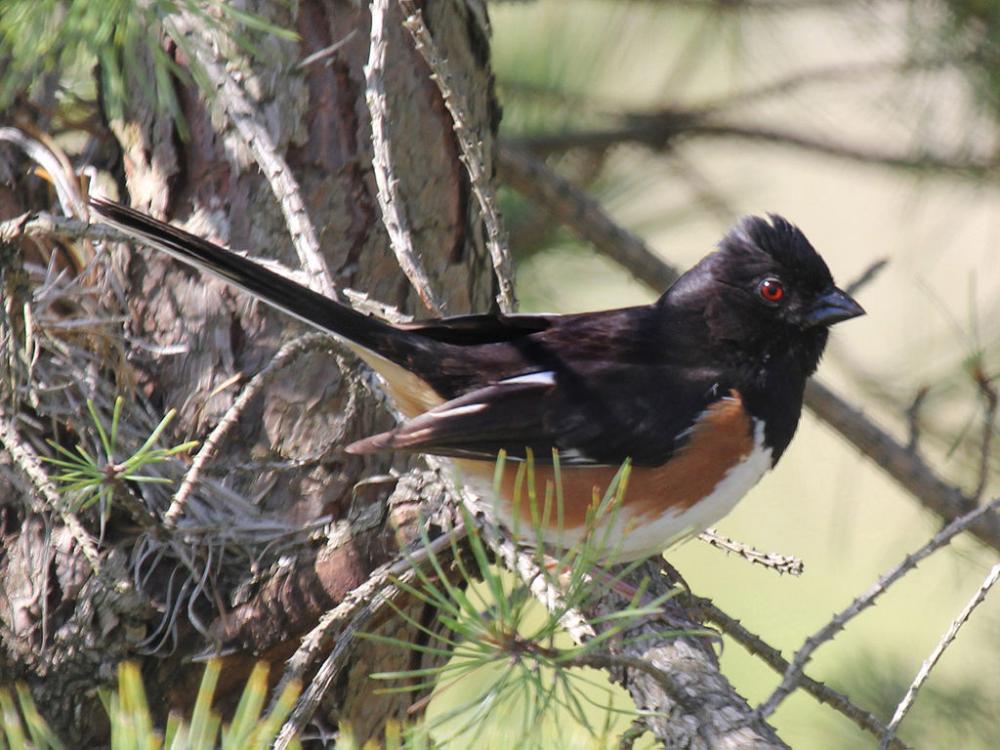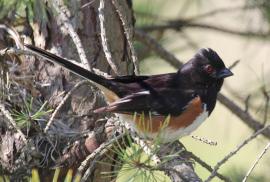Guide to Boreal Birds
Overview
The name "Towhee," an imitation of this bird's call note, was given in 1731 by the naturalist and bird artist Mark Catesby, who encountered it in the Carolinas. This species, also known as the Red-eyed Towhee, was recently combined with the western Spotted Towhee as a single species, the Rufous-sided Towhee. They are now considered distinct species and vary considerably in voice and appearance. The two species are known to interbreed where they come in contact. Towhees often feed on the ground, scratching noisily in the dry leaves.
Description
7-8 1/2" (17-22 cm). Male has black hood, back, and wings. Tail black with white edging on outer feathers; breast and belly white with bright rufous sides. Female has same pattern, but is brown where male is black. Both sexes have red eyes.
Voice
The song varies, often with a few introductory notes and usually ending with a long trill, such as drink-your-teeaaa or to-wheeeee. Call is an inquisitive meewww?
Nesting
3-6 white eggs, with reddish-brown and lilac spots, in a loose cup nest built in a dense bush, close to or on the ground if sheltered by tall planting.
Habitat
Forest edges, thickets, woodlands, gardens, and shrubby park areas.
Range/Migration
Breeds from southern Saskatchewan east to Maine and south to California, Southwest, and Gulf Coast to Florida. Winters acrossmuch of eastern United States north to Nebraska and southern New England.



